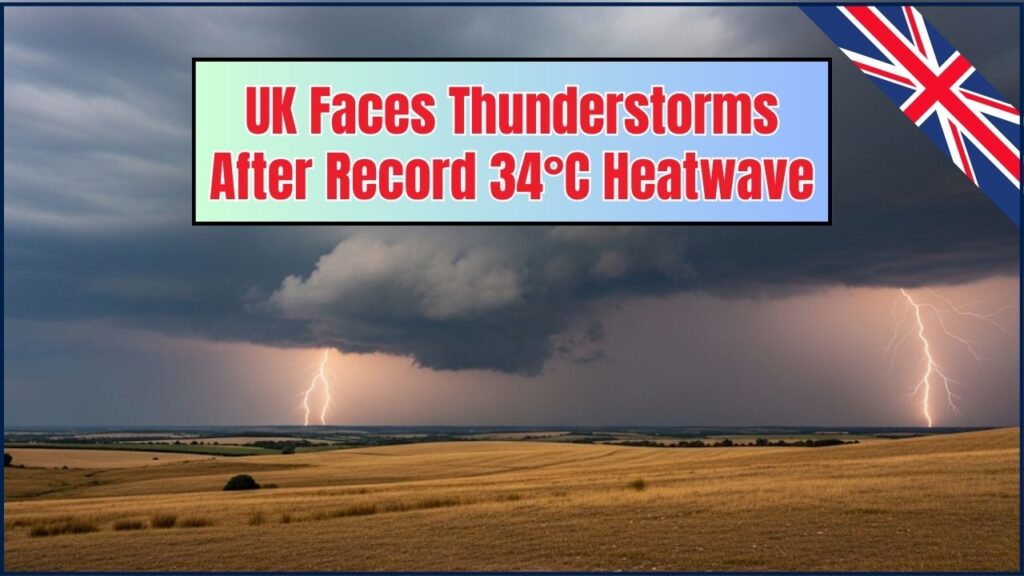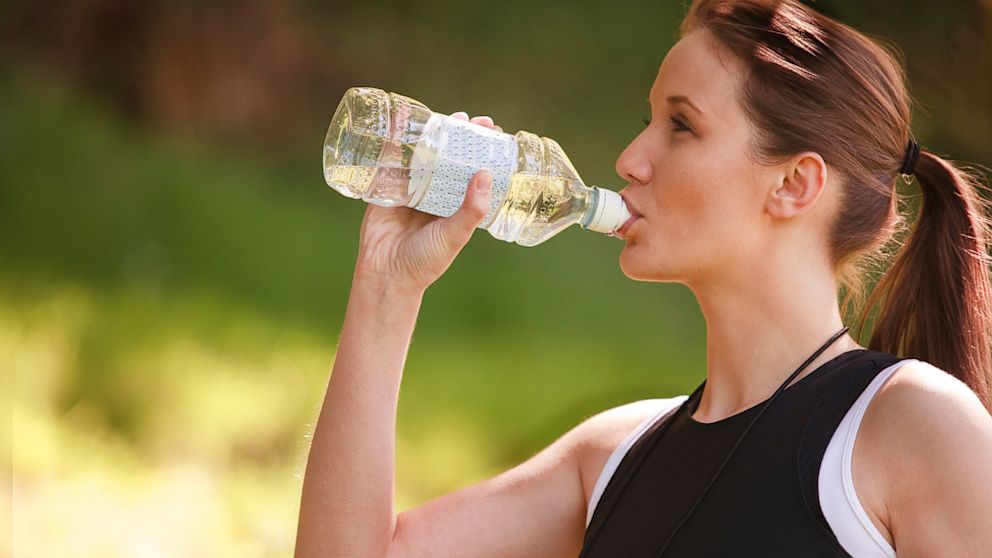The UK is facing a heatwave like no other. With temperatures soaring to a staggering 34°C (93.2°F), many regions have experienced record-breaking heat, challenging both the public and the country’s infrastructure. As residents sweat it out, the key question is: When will the heat finally break? As the days of intense heat start to wind down, thunderstorms and cooler air are on the way, but there’s more to this story than just the weather.

In this article, we’ll explore everything you need to know about the heatwave, how it’s affecting daily life, and what’s coming next. We’ll also give you some practical tips to help you manage through this extreme weather event. Whether you’re concerned about your safety or curious about the broader implications, we’ve got you covered.
What’s a Heatwave?
You hear “heatwave” a lot, but what does it actually mean for the UK? Simply put, a heatwave is when a region experiences unusually hot weather for a prolonged period, often for three days or more, with temperatures significantly above the average for that time of year. These aren’t just warm summer days; they’re spells of intense heat that can really make things uncomfortable and even dangerous.
UK Weather’s Shifting Sands
Looking back, the UK’s summers pre-2000 often featured pleasant, mild conditions with occasional warm spells. Heatwaves were less frequent and typically didn’t reach the intense temperatures we’re now experiencing. Fast forward to today, and 30°C+ days are becoming a more common feature, putting strain on infrastructure designed for cooler climates and increasing health risks. This shift underscores a broader trend of more extreme weather events, making adaptation and preparedness crucial.
UK Faces Thunderstorms After Record 34°C Heatwave
| Key Data | Details |
|---|---|
| Heatwave Temperature | The UK has reached highs of 34°C (93.2°F) in some areas. |
| Duration of the Heatwave | The heat is expected to last until Monday, July 14 before breaking. |
| Cooling Period | Thunderstorms and rain will cool temperatures starting July 14. |
| Hosepipe Ban | Areas like Yorkshire have implemented hosepipe bans due to low water levels. |
| Thunderstorms | Thunderstorms are expected to bring heavy rain and cooler conditions by mid-week. |
| Heat-Health Alert | The UK Health Security Agency has issued a heat-health alert for several regions. |
| Official Sources | For updates, refer to the Met Office. |
While the UK endures a heatwave of historic proportions, there’s a light at the end of the tunnel. Cooler air and thunderstorms are set to bring relief. In the meantime, stay safe, stay hydrated, and stay informed. The shift in weather will require careful attention, but with the right preparations, you can handle whatever nature throws your way. Whether you’re fighting the heat or preparing for the storms, remember: knowledge is your best defense.
The Heatwave: An Unprecedented Situation
The UK’s 34°C heatwave is a rare occurrence that has shocked many residents. While the UK’s climate typically enjoys moderate summers, this extreme temperature is a reflection of global climate change. Meteorologists have noted that heatwaves like this have become more frequent in recent years, not just in the UK but globally. With record high temperatures in London, Manchester, and parts of the south, this heatwave is causing disruptions across the country.
Climate Change and Extreme Weather
This extreme heat is part of a growing pattern. Experts from the UK Met Office suggest that climate change is having a profound effect on weather patterns, making heatwaves more intense and frequent. According to the Intergovernmental Panel on Climate Change (IPCC), global temperatures have risen by about 1.2°C since the pre-industrial era, contributing to extreme weather events like heatwaves and violent storms.

When Will the Heat Finally Break?
Relief is on the horizon. Starting July 14, cooler air from the Atlantic will begin to move in, pushing the intense heat away. This will bring much-needed cloud cover, showers, and thunderstorms. The shift will lower temperatures back to more typical summer levels, but not without a little stormy drama. Thunderstorms are expected to bring torrential rain, which will be a welcome change for many. However, the storms may bring hazards such as flash flooding and strong winds, which will need to be monitored carefully.
How to Survive the Heatwave (And Stay Safe)
1. Stay Hydrated
In temperatures as high as 34°C, staying hydrated is key. Water is your best friend. Avoid caffeinated drinks, sugary sodas, and alcohol, as these can contribute to dehydration. For a little variety, try sipping on electrolyte drinks or coconut water to replenish lost salts and minerals.

2. Limit Outdoor Activities
The hottest part of the day is usually from 10 a.m. to 4 p.m. If you must go outside during these times, try to limit physical activity. Wear light-colored clothes and hats, and don’t forget sunscreen with a high SPF to protect against harmful UV rays.
3. Close Windows and Use Fans
It might be tempting to let in some fresh air, but keep your windows closed during the hottest part of the day to prevent the hot air from coming inside. Use fans or, if you’re lucky enough to have air conditioning, turn it on. If you don’t have air conditioning, you can make a DIY air cooler by placing a bowl of ice in front of a fan.
4. Watch for Heat-Health Alerts
Make sure you’re signed up for official weather alerts. The UK Met Office offers notifications about heat warnings, so you can take action before things get too hot to handle. Pay attention to heat-health warnings issued by the UK Health Security Agency, especially if you have elderly relatives or young children who may be more vulnerable to heat.
The Storms: What to Expect
Once the heatwave ends, thunderstorms will take over. These storms will not just bring rain, but also strong winds and lightning, which can cause power outages and property damage. Thunderstorms are most likely to occur in the mid to late afternoon as the cool air meets the heat, creating unstable weather conditions.
How Thunderstorms Could Impact You
Thunderstorms can bring sudden, heavy rainfall, leading to flash floods in areas with poor drainage systems. Wind gusts could be strong enough to uproot trees or damage roofs. Lightning strikes are another hazard, so avoid using electrical appliances during storms.
Expert Tip:
According to Met Office meteorologist, Dr. Mark McCarthy, “The conditions are ripe for thunderstorms to develop in the next few days, and it’s important to stay informed as conditions can change rapidly.”
Summer Heat: Then vs. Now
The UK has always had its share of warm summers, but recent years have seen a noticeable shift. This table shows how our recent heatwave compares to historical norms:
| Feature | Pre-2000s UK Summer Norms | Current UK Summer Trends (Post-2010) |
| Typical Highs | ~20-25°C | Often ~25-30°C, with frequent spikes above |
| Heatwave Length | Shorter, less frequent (e.g., 1-3 days) | Longer, more frequent (e.g., 3-7+ days) |
| Extreme Peaks | Rarely above 30°C | Increasingly hitting 34°C+ (and even 40°C in 2022) |
| Associated Risks | Low to moderate | Moderate to high (infrastructure, health) |
How to Prepare for Thunderstorms
1. Secure Your Home
Before the storm hits, make sure to secure any outdoor furniture or objects that could be blown away by strong winds. It’s also a good idea to check the roof for loose tiles or branches that could potentially cause damage.
2. Emergency Kit
If the storm is severe, it could cause power outages. Prepare an emergency kit with flashlights, batteries, first aid supplies, non-perishable food, and water.
3. Stay Indoors
During a thunderstorm, the safest place is indoors. Avoid using electronic devices during lightning strikes, as they could attract lightning.
FAQs
Q: Will the thunderstorms cause power outages?
A: Yes, the storms could cause power outages due to high winds and lightning. Always have a backup power source, like a battery pack or lanterns, in case you lose power.
Q: Is it safe to drive during a thunderstorm?
A: Avoid driving if possible. Reduced visibility, flash flooding, and strong winds can make driving extremely dangerous. If you must drive, keep your headlights on, drive slowly, and avoid flood-prone areas.
Q: What’s the best way to protect my plants in the heat?
A: Water plants early in the morning or late in the evening when the heat is less intense. For the extreme heat, try mulching around plants to retain moisture.












